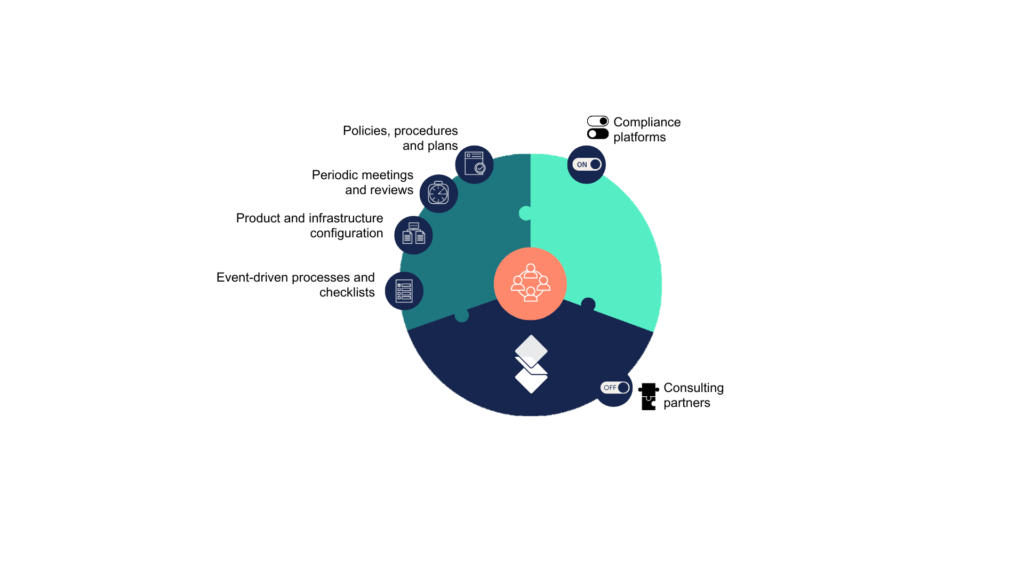Any compliance program needs a few key elements. Each element has its benefits, but implementing all three ensures your compliance program is robust and fit-for-purpose.
1. Internal Governance
No matter what software or services you plan to use for your compliance, you need to maintain internal governance activities. This includes your management structures, defined processes, the systems you use to track and operate processes, how you manage your employees, and more.
These can’t be outsourced. They can be simplified and supported by software or third-party service providers like a CISO, but they will always remain your responsibility to operate and ensure they meet your compliance obligations. Those obligations include your customer’s requirements, any regulations that apply, and your internally defined policies that are influenced by those other requirements.
These policies are a critical foundation for all three components of your compliance, and it’s best to define them early so the remaining pieces fit together.
2. Software and Platforms
Every company uses some form of software as part of its compliance program. We can broadly divide this into two sub-parts: software in the scope of compliance and governance, risk, and compliance (GRC) platforms.
Software in the scope of compliance typically includes the key systems holding sensitive data. For typical SaaS companies, this includes cloud infrastructure like AWS, in-house-built product(s), code repository, authentication software, and others.
Both need to be secured and operated effectively to comply with security compliance standards, but they often have features that automatically address compliance requirements. For example, AWS has network firewalls, applies encryption to databases, and enables effective system recovery. For Okta, it’s strengthening authentication to other systems.
GRC software is designed to manage compliance obligations centrally. This is a very broad category that includes platforms enabling audits and compliance to be verified effectively. It also includes compliance platforms designed for maximum automation of security standards. These platforms are often much broader than security compliance.
They include functions to implement and maintain the risk registers, vendor tracking, and compliance controls across any standards. We partner with some of the world’s leading GRC platforms like Drata and Vanta to create a seamless compliance experience.
3. Professional Services
There are two main categories of professional services, generally called “consultants” and “auditors.”
Consultants implement and maintain compliance (think CISO services), while auditors verify compliance and issue accreditation. To maintain independence, these two roles need to be segregated.
Whilst some companies prefer to use their internal teams to build compliance capability in-house, engaging third-party consultants can save those internal responsible owners time and add capability, especially if there are no internal security experts.
Auditors are required for any formal compliance accreditation. It’s the independent audit and issuance of assurance reports or certifications that constitute compliance with many of the industry standards. For regulations, you can be compliant without verification from auditors, but providing audited assurance reports builds greater trust with third-party stakeholders who are accountable for your compliance.
For example, using third-party services that handle relevant data like the personal data of EU citizens, triggers GDPR compliance requirements that apply to the enterprise.

To learn more about designing and leveraging these pillars effectively to protect your organization and data, contact us.
















